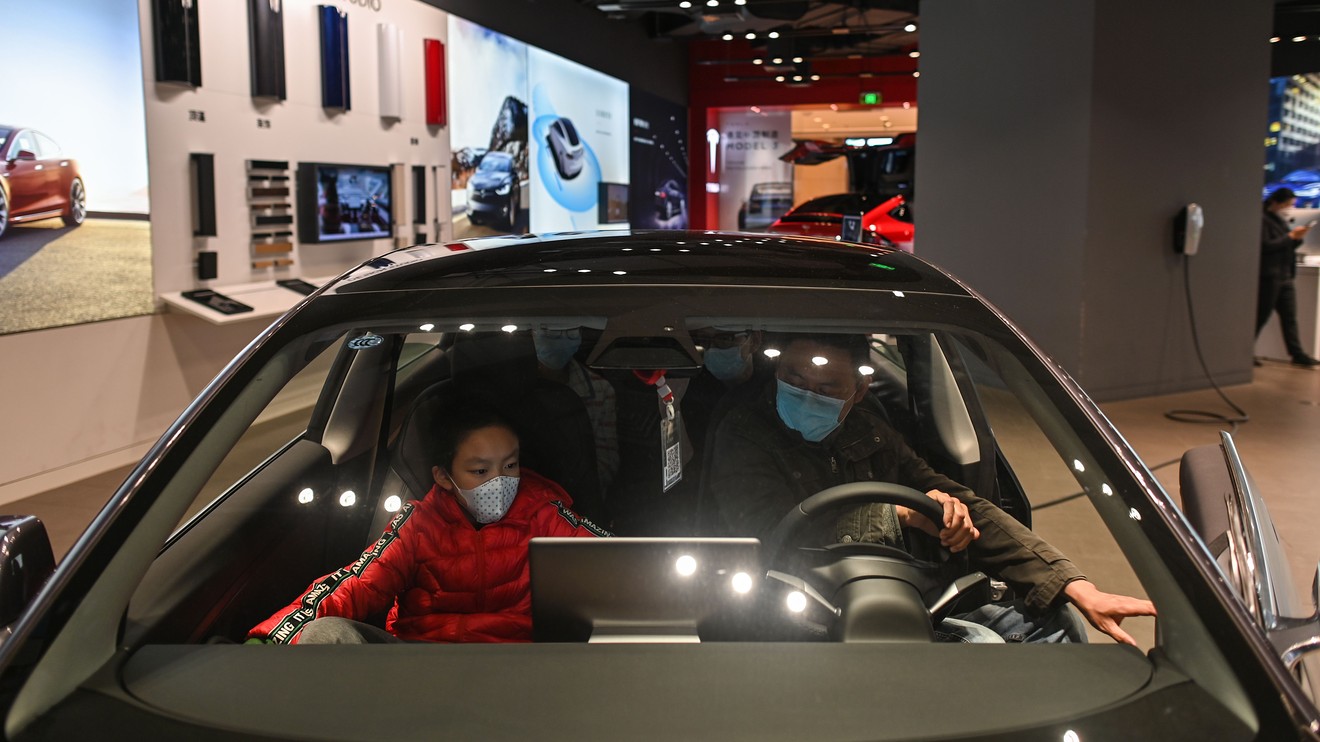
It’s hard to take Elon Musk seriously sometimes. The wacky CEO was recently in the news for revealing that he plans to sell off his earthly possessions in anticipation of limited cargo space on a rocket to Mars. And then there’s that wild baby name.
But however you feel about Musk and his spaced-out aspirations, it’s hard to not be inspired by what he’s done at Tesla TSLA, +5.04% and the value he’s delivered for shareholders. The stock is the top performer in the Nasdaq-100 NDX, +1.30% so far this year with a gain of more than 95%. And while the S&P 500 index SPX, +1.68% is up a paltry 6% in the last 24 months, these shares are up more than 170% in the same period.
There are certainly concerns about Tesla running up too much too soon. Even Musk tweeted that “Tesla stock price is too high imo,” after all. But there remain three significant catalysts that, should they materialize, could keep Tesla running to new highs in 2020.
U.S. production keeps ramping up
Musk is pushing to resume production at Tesla’s Fremont, Calif., facility after the plant was closed on March 23 because of the coronavirus pandemic. Interestingly enough, the manufacturing center stayed open longer than some other manufacturers as Musk contended Tesla was an “essential business” and didn’t have to abide by shelter-in-place orders.
Production, not demand, has long been a focus for investors. Tesla produced 103,000 vehicles in the first quarter and delivered 88,400 vehicles — its best-ever first quarter performance. That figure includes the last week of March when its California operations were curtailed. Furthermore, Tesla noted that the tally “should be viewed as slightly conservative, as we only count a car as delivered if it is transferred to the customer and all paperwork is correct.”
It’s worth noting that Tesla’s disruption of the traditional auto dealer model has made it well-prepared for the current moment. The company is currently offering a touchless “Direct Drop” delivery model where people can submit payments and documents digitally and then receive their new car without any human interaction.
Is the domestic ramp-up of Tesla’s production a sure thing? Not by any stretch. Some analysts remain convinced the firm’s 2020 manufacturing volume will likely be in the low 400,000s and not quite up to the ambitious 500,000 target previously plotted by Musk & Co. However, that strong first-quarter performance and the looming end of a manufacturing shutdown should give investors hope.
Market share in China keeps increasing
Just as the pandemic affected domestic operations, there were initial concerns that coronavirus-related production shutdowns in China could dampen Tesla’s substantial growth potential in the country’s emerging EV marketplace. However, there seem to be signs that early 2020 hiccups didn’t cause serious challenges.
Case in point: A Chinese industry group reported Tesla sold 10,160 vehicles in China in March, its highest ever monthly total. There also are reports that current capacity is 3,000 vehicles a week, which would help put that all-important 500,000-vehicle overall production target within reach.
What’s more is that it’s increasingly clear Tesla is achieving this success in an auto marketplace that is objectively terrible thanks to public health concerns and related supply-chain disruptions. Overall passenger car sales in Chine plummeted nearly 41% in March compared with the prior year. But Tesla accounted for nearly one-third of all the EVs sold in that period.
This confluence of surging Tesla demand amid struggling competition makes for quite a catalyst — and could even help buy Tesla time if it misses its ambitious targets.
Put it side by side with cash-strapped Ford Motor F, +7.59%, which hit an 11-year low in March after cutting its dividend to shore up its finances, or General Motors GM, +6.64%, whose stock has plunged 40% in the last 12 months and saw its debt downgraded in May to one step above junk, and any growth at all looks favorable by comparison.
The fact that Tesla is setting records and gobbling up market share in China, however, make its growth story even more compelling.
A call-up to the S&P 500
Analysts love to geek out on production capacity, profitability and other data points around Tesla. But there’s a much more fundamental catalyst looming for Tesla via inclusion in the vaunted S&P 500 — a move that would unlock institutional buying pressure in a tremendous way.
Inclusion criteria, beyond the obvious requirements like a U.S. headquarters and the filing of annual 10-Ks, involves a market capitalization of more than $8.2 billion and minimum volume of 250,000 shares per month — items that Tesla checked off long ago.
The item that has been the most practical stumbling block, however, is profitability. S&P demands that a stock post four consecutive quarters of positive GAAP earnings. But while Tesla has manage to operate in the black sporadically since its IPO, including its first-ever profit booked way back in 2013, there hadn’t really been much of a streak to speak of until recently.
Tesla returned to profitability in its third-quarter report back in October and followed that up with a profitable fourth quarter and most recently a profitable first-quarter report at the end of April.
Once again, there are no guarantees that the streak will continue in the second quarter — or that Tesla’s numbers pass muster under Generally Accepted Accounting Principles if it does. After all, there have been reports that Tesla is selling parts to SpaceX (a Musk-owned company), making creative use of energy credits and engaging in other numerical calisthenics.
And perhaps more importantly for traders, there’s no guarantee of a mythical buying frenzy if and when it joins the large-cap stock index. It’s reasonable to wonder whether many on Wall Street have already been front-running a profitable quarter and that inclusion in the S&P, and how much of this trend has already been priced in through the stock’s’s impressive run since that October earnings report.
Still, many American stockholders don’t actually buy individual stocks; they simply buy passive investment vehicles like ETFs benchmarked to the S&P. The potential of all these hands-off investors collectively adding Tesla to their portfolios at the same time is a catalyst that can’t be ignored.
Now read:Elon Musk knocks Warren Buffett in return to Joe Rogan’s podcast
Jeff Reeves writes about investing for MarketWatch. He doesn’t own any of the stocks mentioned in this article.









